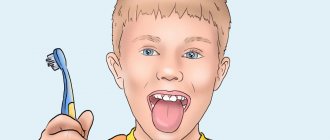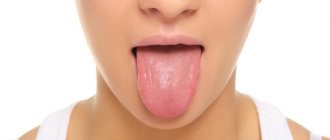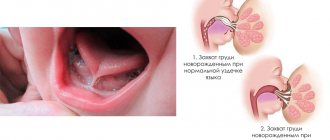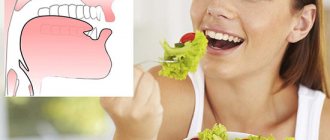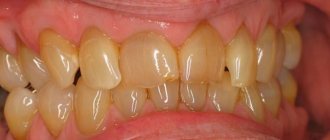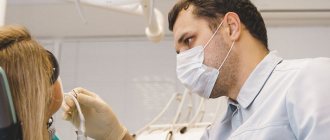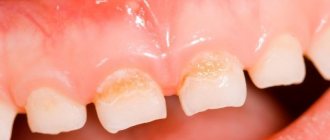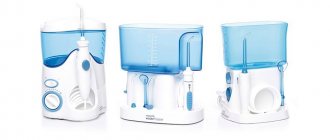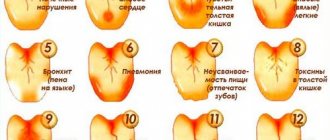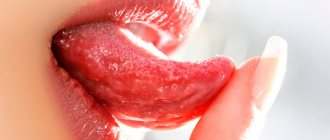Lichen planus
If you have problems with the oral cavity, it is important that you consult a periodontist in a timely manner. This is the only way to accurately determine the cause of the disease and prescribe the correct treatment. The sooner the patient sees a doctor, the easier and faster the therapy. In the case of lichen ruber, which is flat in nature, the oral cavity is covered with a whitish film. Pathological bubbles appear on the mucous membrane, where an admixture of blood inclusions is clearly visible.
The disease occurs as a result of immune disorders, which causes inflammation. The pathology is provoked by chronic stress, emotional turmoil, digestive disorders, liver and pancreas disorders. Some experts believe that the disease is associated with disorders of the cardiovascular and endocrine systems, and hypertension. The disease occurs due to injuries, in patients who come into contact with substances for film development, as well as during long-term tetracycline therapy.
Leukoplakia
This disease usually causes a plaque on the roof of the mouth in an adult. Painful blisters form as the mucous membrane becomes keratinized. White thickenings appear as a result of exposure to pathological agents on the mucosa. This could be alcohol, tobacco smoke, spicy and spicy foods. Sometimes the disease develops as a side symptom of long-term medication use.
Tonsillitis
The development of tonsillitis is associated with the penetration of various infections into the body:
- Staphylococci, streptococci;
- Pneumococci and chlamydia;
- Anaerobic organisms or fungi;
- Haemophilus influenzae and cabsiella;
The acute form of the disease is caused by chronic rhinitis, caries, and chronic pharyngitis.
Why plaque and stone are dangerous
The plaque that settles on the teeth is soft. It can be easily removed with any hygiene products. Within 6-12 hours it reacts with the components of saliva, becomes saturated with calcium salts and hardens. The only way to prevent this is to use mouthwash throughout the day. Once the plaque has hardened, it can no longer be removed.
Tartar gradually forms. It continues to grow as new layers of plaque easily “stick” to the rough surface. After about 6 months it becomes visually noticeable, but this is not its main danger.
The stone grows in the cervical part of the crown, gradually penetrating into the subgingival area. This leads to mechanical damage to the gums and loosening of the teeth. Microorganisms cause gum inflammation and provoke more severe oral diseases. Patients complain of bleeding and sensitivity of the gums, and bad breath. With further growth of the stone deeper into the gums, there is a risk of developing cysts on the root of the tooth.
How to clean your tongue?
You can clean your tongue using the following hygiene products:
- tongue scraper - looks like a brush with a long handle and a flat head equipped with bristles. Due to its width, it does not put pressure on the tongue and does not cause a gag reflex. Tongue scrapers are suitable not only for the tongue, but also for removing plaque from the cheeks.
- tongue cleaning spoon - an elastic attachment for an irrigator with a spoon-shaped tip. After brushing your teeth, you need to run this spoon over your tongue to remove plaque. Some people prefer to use a wooden or silver spoon for this purpose. However, it should be used individually and only to clean the tongue.
- multifunctional toothbrush - a toothbrush equipped on the back with a rough surface for cleaning the tongue. Multifunctional toothbrushes are less convenient than spoons and tongue scrapers, but they save time by simply turning the brush over to the other side after brushing.
It is not very convenient to clean your tongue with an ordinary toothbrush - it is too bulky, and the bristles may seem too stiff. Also, strong pressure with a brush on the root of the tongue can cause a gag reflex. Therefore, it is better to use special devices to clean your tongue.
Causes of congestion
- Insufficient oral hygiene, incorrectly selected hygiene products.
- Eating a lot of sweets, sticky foods, rich in light carbohydrates, and at the same time a small amount of solid foods, such as vegetables, in the diet.
- Abuse of products that have a coloring effect. Tea, coffee, cola, carbonated drinks - all this leads to the fact that the plaque turns brownish and, after hardening, spoils the smile.
- Diseases of internal organs. Patients with diseases of the gastrointestinal tract and endocrine system are prone to the formation of plaque on their teeth.
- Partial edentia, malocclusion, severe crowding of teeth.
Patients with bridge prostheses are at risk. The bridge is fixed on the supporting tooth. Food particles get trapped under the crown. In this case, cleaning plaque on teeth with conventional means is impossible. As a result, it grows, microorganisms attack the gums and supporting teeth, and it becomes mobile. If you have dentures, you should definitely visit your dentist for professional cleaning.
Treatment
Correctly prescribed treatment will quickly eliminate symptoms. Complex therapy will be the most effective.
- Local treatments are recommended for healing ulcers. Special gels and ointments prevent the proliferation of pathological bacteria.
- Soreness and fever are relieved with the help of painkillers and antipyretics.
- Those factors that provoke the disease are eliminated.
In addition, the diet is selected, the bite is corrected, and concomitant diseases are treated. Drugs prescribed:
- Against candidiasis - “Chlorhexidine”, “Stomatofit”, “Rotokan”;
- Rinse solutions;
- Combined-action medications, for example, Cholisal-gel.
- Vitamins to strengthen the body's defenses.
- Calcium supplements to reduce allergic reactions.
- Iron supplements.
Types of plaque
- Soft. Formed on teeth during human life. It is not noticeable on the surface of the enamel and is easily removed from it using hygiene products.
- Solid. Once hardened, it is almost impossible to remove plaque from teeth at home.
- Supragingival stone. Formed from hard plaque. Outwardly it looks like a small dark-colored rim in the cervical area.
- Subgingival stone. It is formed under the gum, so it is not visually noticeable. It can only be detected using a special dental probe or an x-ray. If subgingival stone is not removed in time, gum resection may occur.
Diagnostics
To cure plaque in the mouth on the roof of your mouth, you need to find out the cause of the disease. To do this, you need to carry out diagnostic procedures. Research begins with a visual examination and medical history. Besides:
- A clinical and sugar blood test is done;
- A scraping is taken from the pathological area;
- Submits urine for analysis;
Blood is tested for viruses and fungi. A biopsy of the affected tissue is performed. Also, the body’s defenses are assessed and the sensitivity of drugs to the pathogen is determined. If there is a suspicion of the development of syphilis, a special Wasserman test is used. Giardiasis is clarified using instrumental diagnostics of the abdominal organs. After laboratory tests, the correct prescription can be made.
Home Remedies
Home remedies for plaque removal are rather preventative. In order to maintain dental health, it is necessary to follow the rules of hygiene:
- Brush your teeth twice a day with a toothbrush and suitable toothpaste.
- Use toothpicks and dental floss after meals, as the brush cannot reach hard-to-reach places.
- Use mouthwash regularly.
Small plaque can be removed using pastes containing abrasives or tooth powder. When using them you need to be careful, as you can damage not only the enamel, but also the mucous membrane of the gums. You need to be even more careful if you decide to remove plaque from your teeth with whitening agents - soda, hydrogen peroxide. Their uncontrolled use can cause problems with dental health.
Oral irrigators
Cleaning the oral cavity with a constant or pulsating stream of liquid under pressure significantly improves the quality of oral hygiene, and also improves blood circulation in periodontal tissues due to the effect of hydromassage of the gums.
There is a diverse arsenal of devices that provide water supply to the oral cavity for the purpose of cleaning it. Thus, a toothbrush equipped with a device for supplying liquid into the channels between the bristles was patented in the USA. The air supplied into the hole on the brush head is mixed with the sprayed liquid, which ensures the creation of many air bubbles in the channels. The bubbles move along the channels between the bristles and, in contact with the surface of the teeth, burst, helping to remove plaque and plaque from the teeth. In Germany, a device for rinsing the oral cavity has been proposed, which has the shape of an impression tray with a supply of water and air to numerous spray nozzles directed at the teeth. However, the most widespread are the so-called oral irrigators or electric hydromassagers. They have the form of nozzles that precisely deliver under pressure (from 0.7 to 4.8 bar) a stream of liquid poured into the tank. The strength of the fluid flow is adjustable. The jet can be centered ("jet" mode) or sprayed ("shower" mode; Fig. 60)
, constant or pulsating. When working in the “jet” mode under strong pressure, food debris and partially soft plaque are washed away from the surfaces of the teeth, interdental spaces, gums, tongue, and oral mucosa; When working in the “shower” mode, the gums, mucous membrane and tongue are massaged, due to which peripheral blood circulation increases and normalizes. Water or solutions that have a therapeutic effect on periodontal tissue are used as a washing liquid. This combines the effect of water with the help of an oral irrigator, hydromassage and medication.
The systems described include Braun Oral-B OxyJet
(Fig. 61), irrigators AEG Aqualux electronic, Alaska MD 1202K, Blend-a-dent Jet plus, Broxo Jet, Mellert MDI, Quelle Privileg, Rowenta Den-tajet plus MY-45S,
regular and subgingival irrigators Teledyne Water Pik
(Fig. 62).
The subgingival irrigator
of this company has a thin, pointed, flexible, atraumatic tip that is capable of delivering a stream of rinsing solution into the gingival groove or periodontal pocket (Fig. 63). Irrigators are equipped with several nozzles with different color markings for different family members. There are portable (travel) oral irrigator systems.
The most effective use of oral irrigators is by persons who have fixed orthopedic and orthodontic structures, in the presence of intraoral traction due to a jaw fracture, and with periodontal diseases.
Causes of white plaque on gums
Candidiasis
The most likely cause of such symptoms is infection with microscopic fungi of the genus Candida, relatives of common culinary yeast. Candida is an opportunistic organism that is present in the microflora of healthy people and animals. However, if the concentration of the fungus on the surface of the mucous membranes exceeds a certain critical threshold, its vital activity leads to the appearance of a number of unpleasant symptoms. One of the main manifestations of candidiasis is the formation of a white coating, which can cover both small and large areas of mucous membranes. This plaque consists of fibrin, bacterial mass, waste products of microorganisms, and pseudomycelium of the fungus Candida. When it is scraped off, areas of ulceration and maceration (softening) of the mucosa are revealed.
A white spot on the gum is not the only manifestation of this disease; the fungus can also affect the mucous membranes of the palate, the inside of the cheeks, the tongue, the corners of the lips, and the bottom of the mouth. In addition, candidiasis is often accompanied by the appearance of such unpleasant symptoms as burning, dryness, and soreness in the mouth; Systemic signs of infection may also occur - fever, nausea, headaches, general weakness and malaise.
Treatment and prevention of candidiasis include the use of antifungal and antiseptic drugs, agents that accelerate the regeneration of damaged epithelium. Good results are achieved by regular use of rinses with disinfecting components - for example, chlorhexidine and benzydamine, which are part of the ASEPTA rinse, are active against a wide range of pathogens. The use of such remedies helps get rid of inflammation and bleeding, reduce the risk of developing a secondary infection and speed up recovery.
Leukoplakia
If the gums turn white in an adult, especially a smoker, this may be a sign of leukoplakia. Leukoplakia is not a disease in the literal sense of the word - it is only a pathological condition, which, however, often precedes the development of cancer. As a rule, this condition occurs as a result of constant exposure of the mucous membranes to one or another irritant - chemical, mechanical, temperature. As a result, hyperkeratosis occurs - keratinization of the upper layer of the mucous membrane. The appearance of white plaque is one of the signs of hyperkeratosis. Leukoplakia plaque is difficult to scrape off even with considerable effort.
Leukoplakia can be caused by exposure to chemicals contained in tobacco, the atmosphere, liquids or food, irritation of the mucous membrane due to contact with the sharp edge of a tooth or denture, too cold or hot food, galvanic current in the mouth due to the presence of metal fillings. Such processes occur in the mouth when it contains dentures containing various metals.
Treatment consists primarily of eliminating traumatic factors. Patients are also advised to use agents that accelerate tissue regeneration. One of these products is ASEPTA gel with propolis. Its regular use helps reduce itching and pain symptoms and quickly restore damaged mucous membranes.
Stomatitis
A white spot on the gum may be a sign of stomatitis, an inflammatory disease of the oral cavity. This spot is caused by the activity of one or another pathogenic microorganism. Most often, stomatitis manifests itself in the form of small white dots or spots, which over time can degenerate into ulcers. It is easy to cope with this disease at the initial stage: often it is enough to use antiseptic rinses and special medicinal gels.
For this purpose, we recommend using ASEPTA and ASEPTA Fresh rinses. They contain broad-spectrum antibacterial components, as well as substances that help eliminate inflammation, bleeding and other unpleasant symptoms of stomatitis. No less effective is the adhesive balm ASEPTA, which has a long-lasting effect on the affected areas of the mucous membranes. ASEPTA balm is also excellent for the treatment of other inflammatory diseases, periodontitis and gingivitis, which in some cases can also lead to the formation of white spots and spots.
Neoplasms
If a white spot on the gum hurts when pressed, it may be a sign of neoplasms such as a cyst or wen. In most cases, these formations do not pose a serious health hazard, but sometimes they have to be removed surgically. In children, there are also Bohn's nodes and Epstein's pearls - small cysts formed from the remains of the salivary glands, dental plates, and various epithelial inclusions. They most often do not cause unpleasant symptoms and go away on their own without special treatment.
Clinical researches
As a result of clinical experiments using the Asepta series of products, which were carried out at the Kazan State Medical Academy N.V. Berezina, E.N. Silantieva, S.M. Krivonos, the effectiveness of the Asepta line of drugs has been proven as a means of etiotropic and symptomatic therapy as part of the complex treatment of patients with chronic inflammatory periodontal diseases.
Sources:
- The use of drugs from the Asepta line in the complex treatment of inflammatory periodontal diseases (N.V. Berezina E.N. Silantyeva S.M. Krivonos, Kazan State Medical Academy. Kazan.) N.V. BEREZINA, E.N. SILANTIEVA, S.M. KRIVONOS Kazan State Medical Academy
- The effectiveness of the use of Asept “adhesive balm” and Asept “gel with propolis” in the treatment of chronic generalized periodontitis and gingivitis in the acute stage (Municipal Dental Clinic No. 4, Bryansk, Kaminskaya T. M. Head of the therapeutic department Kaminskaya Tatyana Mikhailovna MUZ City Dental Clinic No. 4, Bryansk
- The effectiveness of the use of Asepta balm in the treatment of patients with inflammatory periodontal diseases (Doctor of Medical Sciences, Professor Elovikova T.M., Department of Therapeutic Dentistry, USMU. Yekaterinburg) Doctor of Medical Sciences, Professor Elovikova T.M. Department of Therapeutic Dentistry, USMU. Ekaterinburg
- Report on clinical trials to determine/confirm the preventive properties of commercially produced personal oral hygiene products: mouth rinse "ASEPTA PARODONTAL" - Solution for irrigator." Doctor of Medical Sciences Professor, Honored Doctor of the Russian Federation, Head. Department of Preventive Dentistry S.B. Ulitovsky, doctor-researcher A.A. Leontiev First St. Petersburg State Medical University named after academician I.P. Pavlova, Department of Preventive Dentistry.
Causes
The color of the tongue shows the condition of the digestive tract and its organs . If a white coating is constant or appears too often, which occurs along with an unpleasant odor and sour taste, the following diseases can be assumed:
- Gastritis with low or high acidity. With this disease, the tongue is usually covered with a white coating in the very center, and small cracks are visible on it . The disease at the very beginning of its development may no longer have any symptoms, and the plaque may have a whitish-grayish color.
- Peptic ulcer of the stomach or duodenum. In addition to these symptoms, there may be pain that subsides after eating, and belching of a rotten egg .
- Liver dysfunction. The white coating will be located closer to the left side of the tongue .
- Diseases of the biliary tract.
- Pancreatitis. Plaque is located in diseases of the pancreas on the right side of the tongue .
- Intestinal problems. A coating on the tongue appears at the base, this indicates a large amount of waste and toxins in the organ, dysbacteriosis, and can also serve as a sign of the onset of gastritis.
- Oral candidiasis (candidal stomatitis). This is an infectious disease transmitted by airborne droplets. It often occurs in heavy smokers, since there is no normal microflora in the mouth and due to hormonal imbalances, mainly in women. Asthma or other chronic lung diseases can also lead to thrush .
- Lung disease. A white coating accumulates at the base of the tongue on the sides ; it is also characteristic of smokers with extensive experience when serious lung problems occur.
The color of the plaque is in all cases white, but can darken and become yellow or gray.
Note! The darker the color, the more dangerous the disease in the body.
Thus, a white-yellow coating may indicate a disease such as cholecystitis or biliary dyskinesia.
A sour taste in the mouth and a white coating on the tongue may indicate the development of a disease such as a diaphragmatic hernia. The reasons for its appearance include :
- chronic diseases of the gastrointestinal tract;
- chest cavity injuries;
- age predisposition over 50 years;
- heavy constant physical activity;
- obesity;
- chronic constipation;
- disruption of the conduction of nerve impulses in the diaphragm.
Important! Everything in the body is interconnected and problems with one organ lead to problems with others, which is why it is important to promptly respond to atypical symptoms and seek help from specialists.
How to remove plaque from your tongue
To remove plaque, it is enough to carry out hygienic cleaning of the oral cavity with careful treatment of the mucous membrane of the tongue. In the vast majority of cases, this method provides only a temporary effect, which can last from several tens of minutes to several hours. But after a certain time, the plaque appears again, bringing a person discomfort and a lot of inconvenience.
In order for the effect to last longer or not to appear in the future, it is necessary to determine the root cause of why the plaque appeared on the tongue - this can only be done with the help of a qualified doctor, who must carry out an effective diagnosis of the problem. The doctor will also advise you on how to get rid of plaque on the tongue with maximum efficiency, and will also write out a detailed diagram of how to treat plaque on the tongue in a particular case.
Treatment of herpes sore throat in children
There is no specific antiviral treatment. Treatment of the cause of herpetic disease should be carried out according to the following scheme:
- isolation of the patient
- drinking plenty of fluids, bed rest
- actions aimed at relieving and alleviating symptoms.
At the moment, no drug has yet been invented that can kill the causative agent of the disease. You can only alleviate or remove the symptoms. A person recovers completely only when the body develops immunity to the virus. Usually the body takes a week to do this.
First of all, it is advisable to isolate the child from other family members - separate dishes, linen and towels - the disease is contagious. For herpetic sore throat, children are prescribed antihistamines to relieve swelling and irritation. "Claritin", "Suprastin" and others are suitable. To reduce the temperature, use antipyretics: Nurofen, Efferalgan, Paracetamol, etc. To relieve pain in the throat, gargle with decoctions of sage, chamomile, calendula, salt or soda solution. Rinsing should be done every hour. You can use special sprays and aerosols: Hexoral, Ingalipt, Tantum-Verde. Tablets and lozenges relieve pain. It is advisable to use the antiseptic agents Miramistin and Chlorhexidine.
For successful recovery it is necessary to create favorable conditions for the child. It is necessary to provide conditions for sleeping in a well and frequently ventilated room. The diet should consist of soups, purees, and cereals. Food should not be hot so as not to irritate a sore throat. Don't forget about drinking plenty of warm drinks. The patient can be given rosehip decoction, tea with jam or honey.
Note to parents! In case of herpes sore throat, do not inhale, warm up or apply compresses under any circumstances. Such measures will only activate viruses, and the disease will drag on.
Some parents mistakenly lubricate the bubbles in the larynx with iodine or brilliant green. This measure is absolutely ineffective, does not bring any practical benefit, but causes severe pain to the baby.
There is no need to give your child antiherpetic drugs such as Acyclovir and its analogues. As we have already mentioned, the course of the disease has nothing to do with the herpes virus.
